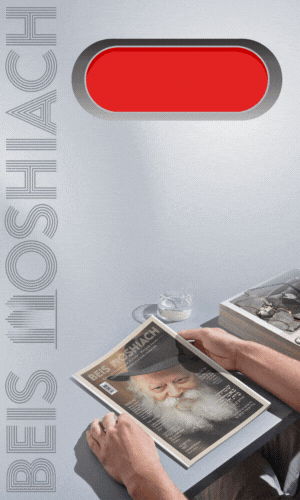Can We Postpone or Precede our Son’s Upsherin to Lag B’Omer?
From the desk of Rabbi Gershon Avtzon, Director of Yeshivas Lubavitch – Cincinnati: We live in Eretz Yisroel. The custom in our city is that all boys that turn three between Pesach and Lag B’Omer have a big upshernish in Meron and then a communal Hachnasa L’Cheder the next day. My sons’ third birthday is a week after Lag B’Omer. Is it OK to cut the hair a week early and also have him join the Hachnasa L’Cheder? • Click to Read
Question: We live in Eretz Yisroel. The custom in our city is that all boys that turn three between Pesach and Lag B’Omer have a big upshernish in Meron and then a communal Hachnasa L’Cheder the next day. My sons’ third birthday is a week after Lag B’Omer. Is it OK to cut the hair a week early and also have him join the Hachnasa L’Cheder?
Answer: Mazal tov on the upcoming simcha! I am sure that you are familiar with the content of the letter that the Rebbe would send to a family celebrating an upshernish:
“This is the quote from my revered father-in-law and teacher, the Rebbe. With regard to [a child’s first] haircut, the upsherinish : It is a matter of great [significance] among the customs of the Jewish people. Its essential purpose is to train [the child to] leave peyos. From the day of the haircut [when] the peyos are left, it is customary to carefully train the child to wear a tallis kattan and to recite the morning blessings, the Grace after Meals, and the Shema before retiring. May Hashem assist you to raise your child [and enable him] to attain Torah, marriage, and good deeds amidst abundant sustenance and peace of mind in both material and spiritual matters.”
In regards to your specific question, there is a very informative letter of the Rebbe about this issue and the Rebbe divides your question into two different parts: (1) Having an upshernish before the child’s third birthday. (2) Having a Hachnasa L’Cheder before the third birthday.
There was a Yid from Yerushalayim named Rabbi Shimon Yaakobovitch. His son was turning three on 14 Shevat. He wanted to postpone the Upshernish until Lag B’Omer (3 months), as was the custom of some Chassidim in Eretz Yisroel. He wrote further that there are even those that make their Upshernish early to be able to have it on Lag B’Omer in Meron.
The Rebbe responded to him:
“It is known how much value our sages put into fulfilling a minhag. Yet the idea you wrote — that there are those that make their Upshernish early, does not seem like a good idea to me. Even if there is a great merit to the custom of having the Upshernish in Meron, that is only for those that are asking to postpone the Upshernish. Even in such a case, that should only be for those that are postponing a few days. The idea to postpone an upshernish for a few months is questionable.”
“The whole idea of an Upshernish is for education—as the [Frierdiker] Rebbe writes—and the beginning of chinuch which was set by many previous generations draws down a great hashpaos for the child. Thus, postponing an upshernish for a long while translates into the child missing out on these special brachos for this time period.”
The Rebbe continues: “Concerning what you write about the Hachnasa L’Cheder —if you should wait until the child is three, or make it earlier—this all depends on the chinuch that is happening in the home: If the home is one such that the child is already receiving active chinuch, there is no rush to bring the child to the cheder before he turns three. But if by having the Hachnasa L’cheder, will begin the process of active chinuch, then it could be a good idea. In such a case, it is not the beginning of learning, rather the beginning of Chinuch.” (Igros, Vol. 14 page 39; #4788).
The Moshiach Connection:
The Upshernish and Hachnasa L’Cheder are obviously connected to the number three. The Rebbe (Va’eschanan 5751) teaches us how to properly view the number three:
“An additional lesson and directive concerning Redemption can be derived also from the beginning of the third chapter of Pirkei Avos: “Look at three things:”
“The term ‘three things’ standing by itself can be a suggestion of the third Redemption and the third Holy Temple, a threefold Redemption and a threefold Holy Temple, because they comprise the virtues of both the first Redemption and the second, the first Temple and the second. Furthermore, the twosome features will be combined as one.
“The imperative, ‘look,’ implies gazing intently, by deeply reflecting and contemplating matters concerning the third Redemption and the third Beis Hamikdash (‘three things’), imbued with feelings of anticipation and exceptional yearning, ‘I anticipate his coming every day,’ implying that he will come every day, this day, literally. How much more so, now that we stand on the threshold of Redemption, that the gazing at these three matters is increased and done with more vigor.”
116
Join ChabadInfo's News Roundup and alerts for the HOTTEST Chabad news and updates!










































